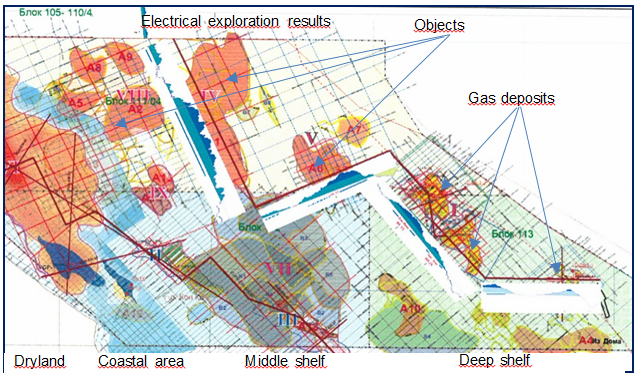

Sequence analysis (Sequence Stratigraphy)


Sequence stratigraphy was used to identify the Lower LST facies in the clastic Pliocene-Pleistocene shelf sediments in Southeast Asia. The Lower LST facies corresponded to conditions of sandy material accumulation within the middle part of the shelf, to which stratigraphic traps could be related. They were mapped within the middle part of the shelf slope, where gas deposits developed within its deep part in low-pore reservoirs. Later, an electromagnetic survey line was acquired through the prospects identified on the basis of this approach and also through the already discovered gas deposits, which showed an increase in resistivity (see pic.) within the prospects even more prominent than even within the proven accumulations.
- 3D mapping of different geobodies (channels and point bars) and evaluation of their properties from attribute cubes
- Samples of digitization of logging data
- Evaluation of gas effect in in thin layered sandstones by ratio of impedances SIMP – AIMP
- Samples of correct reprocessing (Caspian)
- 3D Identification of geo-bodies using Halliburton GeoProbe
- Saturation forecast using cluster facial analysis
- Building a tectonic model of an object using new technologies (package GeoProbe
- Sedimentological analysis of core
- Sequence analysis (Sequence Stratigraphy)
- Function definition for oil saturation distribution
